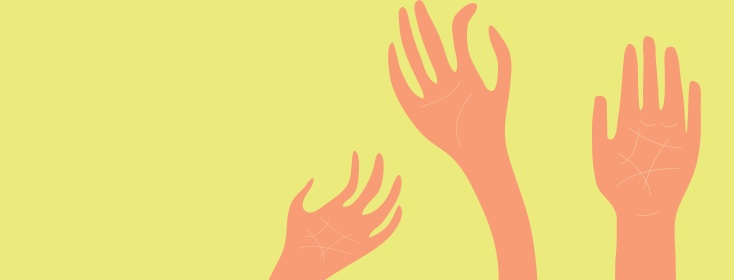Skin Issues and Hepatitis C
The diagnosis of a hepatitis C infection can feel traumatic. One of the early questions many have is regarding the way the world will see them. Will everybody know just by looking at me? Will everything about me change? It’s possible you asked your doctor those very questions. For some people, though, hepatitis C also brings concerns and issues with their skin.
How hepatitis C affects the skin
Hepatitis C can cause your body to produce antibodies called cryoglobulins. They are produced as a response to the body’s fighting of the hepitis C virus. Those cryoglobulins can then create or cause side effects of their own within your body. One of those effects is an inflammation of the skin.
Common skin issues with hepatitis C
Some of the skin issues that can be caused by hepatitis C include:
Jaundice
Jaundice is the most commonly known or expected skin affliction for those who have chronic hepatitis C. Jaundice is when the skin and the whites of someone’s eyes appear yellow. This is a direct result of the way that hepitis C is impacting the person’s liver. If you see these symptoms, consider talking to your doctor right away.
Lichen planus
Another condition is called lichen planus. For some people, when the body is fighting the hepatitis C virus, the body’s immune system can become over excited and accidentally begin to fight what it shouldn’t; in this case, the cells of the skin. When someone has lichen planus, they will see bumps that are purple, flat, and itchy. For those who contract it inside their mouths, it can appear as a lacy white patch or with sores that can be quite painful. These symptoms typically go away on their own, but if they are becoming too itchy or painful, your doctor may prescribe an antihistamine pill or cream to aid in their resolution.
Porphyria cutanea tarda
Porphyria cutanea tarda is also a skin issue that is associated with hepatitis C. Porphyria cutanea tarda occurs when the body builds up too many natural blood chemicals, which leads to a production of porphyrins. This happens because the liver is not properly able to remove the toxins from the blood - something that can happen in patients whose hepitis C has become chronic. Porphyria cutanea tarda appears on the skin as blisters or bubbles, often with darkened discolored patches around these markings. If diagnosed with this condition, doctors will often help the patient by attempting to help the liver to function better. This may also require medication or additional blood-based treatments.
Urticaria
Urticaria can also occur. Urticaria presents as itchy red rashes or splotches on the skin. This happens when the skin is hard at work fighting the hepatitis C virus and is often misidentified as a generalized allergic reaction.
Hepatitis C treatment side effects
As is true with most medications, some hepatitis C treatments can cause side effects. Sometimes, patients are both overwhelmed by their diagnosis and by the process of treatment, which can lead to not fully reading all of the information provided with medication(s). In addition, since side effects can vary from person to person, the experience of a friend or internet blogger may be significantly different than your own. So, it is no wonder then that a skin reaction to medication can come as a shock to a person who may not even realize that the medication is what caused the skin problem. If you are experiencing any of skin symptoms, make sure to let your doctor know. Although it is understandable that you would want to minimize or end skin-related symptoms immediately, do not make any changes to your medication regimen without your doctor’s approval.
Getting help for skin symptoms
First, contact your doctor. Let him/her know about your symptoms. You may be asked to keep notes on when and where the symptom(s) appeared and how long the pain or itchiness lasts. Next, continue any medical treatment plan currently in place until or unless your doctor advises you otherwise.
In the meantime, cold packs can often alleviate feelings of pain or itchiness. Your doctor may approve at home temporary relief options, such as an oatmeal bath, over the counter anti-itch cream, or another kind of salve.
Check with your doctor before applying anything to your rash to treat the symptoms and make sure to let your doctor know what you have used in case it leads to an improvement or worsening of the symptoms.1-8

Join the conversation